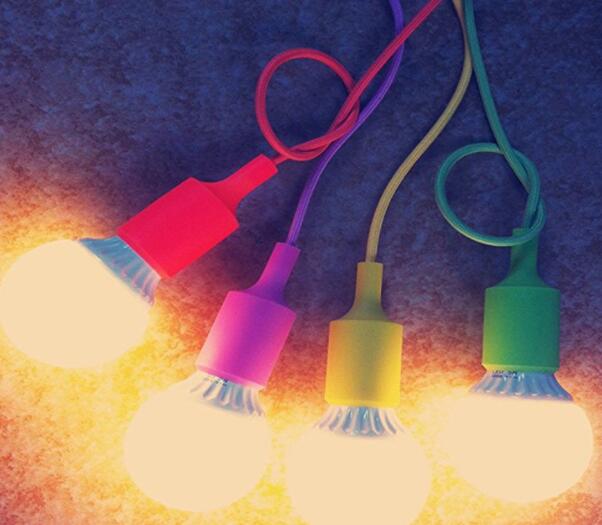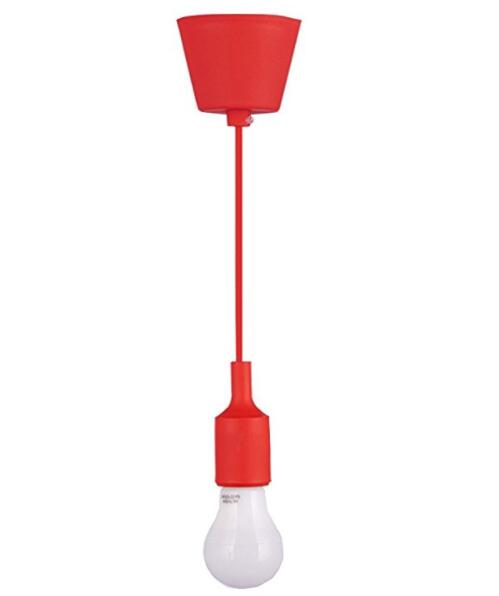Some people wonder if they can put a bigger LED bulb, like a 150-watt LED, in a light socket that’s only rated for 60 watts. Even though LED bulbs use a lot less energy than normal light bulbs, using one with more wattage than the socket is rated for is not a good idea. If you don’t understand how the ratings work and what the wattage of a light bulb means, you could be in trouble.
No, you cannot safely use a 150-watt LED bulb in a socket rated for 60 watts. A socket’s wattage rating is set based on the amount of heat it can handle, and even though LEDs consume less power than incandescent bulbs, they still produce heat. Exceeding this limit can lead to overheating, which can damage the socket and the fixture, and potentially cause an electrical fire.
To understand why this is bad, you need to know how the wattage ratings work for both incandescent and LED bulbs. Incandescent bulbs use a lot more energy to make the same amount of light as an LED bulb. For example, a 60-watt incandescent bulb might make the same amount of light as a 9-watt LED bulb. However, when you put a 150-watt LED bulb in a socket that’s rated for 60 watts, you’re putting a lot more heat and power draw in there than the socket is designed to handle. Even though they’re energy-efficient, a 150-watt LED is still way more than a 60-watt socket can handle.

Exceeding the wattage rating of a socket is dangerous because the socket and fixture are designed to handle a specific amount of electrical power and heat. When that limit is exceeded, the materials in the socket—typically plastic or metal—may start to melt or warp. This damage can expose the wiring inside the fixture, leading to short circuits, electric shocks, or even fire hazards. In addition, the wiring in your home may not be able to support the higher wattage, increasing the risk of electrical overload.
Heat management is crucial when using LED bulbs, especially in fixtures with lower wattage limits. While LEDs produce less heat compared to traditional incandescent bulbs, they are still affected by the heat generated during use. When a higher wattage bulb is used in a low-wattage socket, the fixture’s ability to dissipate heat properly is compromised. This can cause the bulb to overheat, shortening its lifespan and leading to frequent replacements. Worse, it can damage the socket permanently, requiring expensive repairs or even the replacement of the entire fixture.
The materials used in light fixtures are rated for specific wattages, and using a higher wattage bulb can weaken these materials over time. Plastic sockets, for instance, are more prone to melting or becoming brittle when exposed to higher levels of heat than they were designed for. Metal sockets may also warp or conduct heat into other parts of the fixture, increasing the risk of electrical malfunction. The fixture’s wiring is also at risk, as it can overheat, leading to insulation breakdown and short circuits.

When people talk about wattage ratings in LED bulbs, there’s often confusion about the difference between actual wattage and “equivalent” wattage. LED bulbs are sometimes marketed with equivalent wattages to show how much light they produce compared to incandescent bulbs. For instance, a “150-watt equivalent” LED bulb may only consume 25-30 watts, making it safe for use in a 60-watt socket. However, this can cause confusion, so it’s crucial to check the actual wattage of the LED bulb to ensure it falls within the socket’s wattage limit.
Another important factor to consider is ventilation. Fixtures that enclose bulbs tend to trap heat, making it even more important to use bulbs that match the socket’s rating. Enclosed fixtures can cause the bulb to overheat if it exceeds the wattage limit, further reducing the lifespan of the bulb and increasing the risk of fire. Ensuring that the fixture has proper ventilation can help dissipate heat more effectively, but this does not justify using a bulb that exceeds the socket’s maximum wattage.
In the long term, using a high-wattage bulb in a low-wattage socket will cause gradual damage to both the light socket and the fixture. Initially, you might not notice any issues, but over time, the constant exposure to excess heat will wear down the materials. This can result in cracked sockets, exposed wiring, and malfunctioning fixtures. Moreover, using a bulb that exceeds the recommended wattage can also reduce the lifespan of the LED bulb itself, leading to premature failure and more frequent replacements.

So, what should you do instead? Always use bulbs that match or are below the wattage rating of the socket. If you need brighter light, consider using a higher-quality LED bulb with a lower actual wattage but higher lumens output, which can still provide the brightness you need without exceeding the socket’s capacity. If higher brightness is consistently required, it may be worth upgrading the fixture or socket to one that supports higher wattage bulbs safely. This ensures that your lighting system remains safe and efficient for years to come.
In conclusion, you do not want to put a 150-watt LED bulb in a 60-watt socket. This can cause overheating, damage to your fixture, and create a potential fire hazard. Stick to the wattage limit of your lamp socket and buy a bulb that gives you the light you need within that limit. This will help keep your fixtures and bulbs working and safe.













